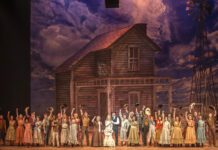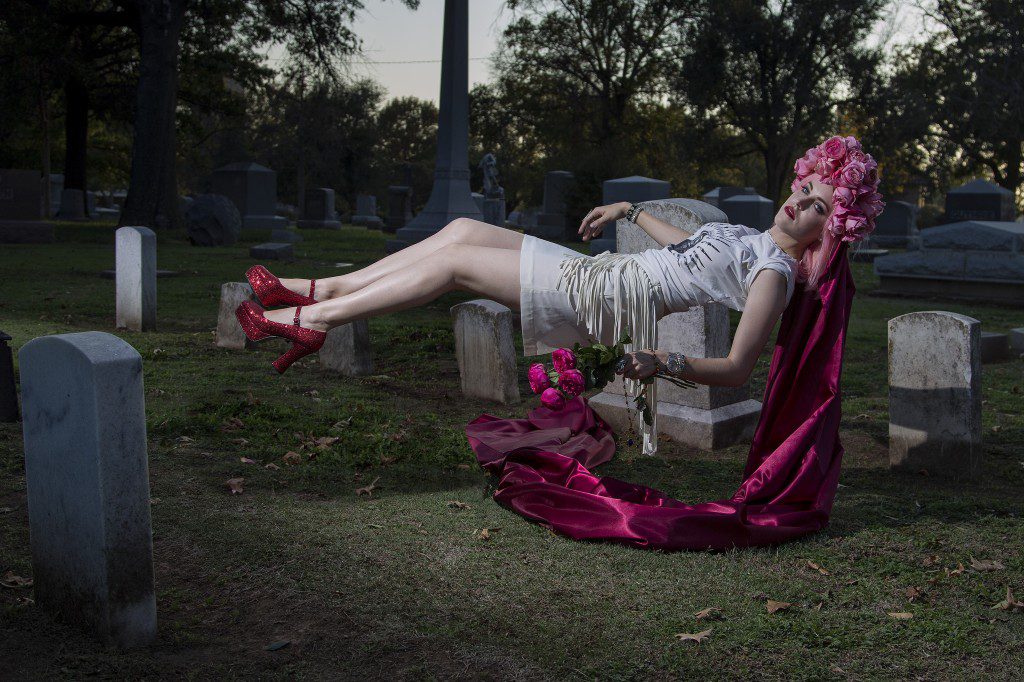Even for grownups, the holiday season brings a time of wonder. You might wonder, for instance, what fool would decide that it’d be a good idea for a radio station to switch to an all-Christmas music format at the end of October.
More than once, during a long career in radio, Tulsa’s Steve Clem has been responsible for exactly that. But he’s hardly a fool, although he’s been called that – and worse – for starting the Yuletide-tune blitz almost two months before the first gift under the tree gets unwrapped.
“In Salt Lake City, where Christmas music is huge, my station and a competing station went head-to-head, and our station started (all-holiday music) on Halloween,” he recalls with a smile. “We did that as a stunt; everybody notices when you start playing Christmas music on Halloween.”
Although, he adds, some of the notice was not particularly flattering.
“I got a lot of emails along the lines of, ‘Are you out of your mind?’ My favorite one said, ‘Congratulations. You’ve managed to ruin three holidays: Halloween, Thanksgiving and Christmas.’
“People were incensed. They were saying they’d never listen to the station again. Then, the ratings came out, and we were on top. That’s because when they were ready for Christmas music, ours was the station they thought of.”
Currently the operations director for Tulsa’s National Public Radio affiliate KWGS (89.5 FM), Clem started his radio career as an announcer and deejay in 1973 at Duncan’s KRHD. He’s made his living on the airwaves ever since. Sometimes, his primary job has been that of a consultant, programming a variety of radio stations. Other times, he’s been a full-time member of a particular station’s staff, consulting others on the side. That’s his situation now, as he continues working with a couple of other stations in addition to his work for KWGS.
In 2000, Clem was program director of Oklahoma City’s KQSR, an adult-contemporary station. That year, he says, was really when intensive Christmas programming took off around the country – and he was right in the middle of it.
“Before then, the normal thing a station did when the holidays got close was start filtering in a Christmas song or two between Thanksgiving and Christmas Eve,” he explains. “Typically, the continuous Christmas music would start about 6 p.m. on Christmas Eve and run until about noon on Christmas day. But around 2000, the success of KESZ in Phoenix – which had been playing all-Christmas music between Thanksgiving and Christmas for a few years – really started circulating around Clear Channel, which owned the station.
“KQSR was a Clear Channel station, too, and all us (program directors) were talking about what we should do for the holiday season,” he adds. “One of the consultants said we ought to look at playing all-Christmas music between Thanksgiving and Christmas, because every year the Phoenix station had done it, their ratings had gone up during the month of December. So we started doing it at KQSR, and we became the No. 1 station in Oklahoma in December. We had never been No. 1 before.”
The next year, of course, saw the 9/11 terrorist attacks shake America’s foundations, and, says Clem, the executives at Clear Channel Communications mandated that several of their stations go to continual holiday music beginning the day after Thanksgiving, with the idea that the old familiar songs would work as a kind of soothing aural balm for the nation.
“A lot of people said then that the all-Christmas format was a 9/11 phenomenon,” Clem remembers, “that it was effective because the country was hurting, and people were nostalgic and pining for a different time. But I knew better. I’d done it in 2000.”
He was right. Eleven years later, the idea of continuous holiday programming in the weeks leading up to Christmas shows no signs of fading away.
“These days, every company, every station, knows about the effectiveness of all-Christmas music,” says Clem. “Sometimes there are three or four stations in one market that are doing it – and it’s done for one reason only. There are very few things that can be done on a radio station that will get immediate results in the ratings. Christmas music draws people to your station like a magnet. It’s only for that holiday period, but if you do it right, it’ll really increase your listenership.”
As one of the programmers known nationally for his work with the all-Christmas format, Clem has programmed as many as a dozen stations a year. And his experience has taught him some secrets about the efficacy of holiday-music bombardment.
“Christmas music doesn’t work in every format, but it’s a magic bullet for adult-contemporary, which is kind of another term for soft rock,” he says. “That’s music that appeals to the 35-plus demographic. It’s an easy fit, because soft rock and Christmas music sound a lot alike. But because it became so popular at adult-contemporary, other stations wanted to see how it would work for them. So you might hear it at country stations, pop stations, oldies stations.
“The thing is,” he adds, “the further away, format-wise, you are from adult-contemporary, from that 35-plus audience, the less chance it’ll work.”
But even if the station plays soft rock the rest of the year, holiday success isn’t guaranteed. Just as important, Clem believes, are the songs themselves.
“The format has its own rules,” he explains. “For one thing, it’s song-oriented rather than artist-oriented, so you can play multiple versions of songs that people really love. Sure, Bing Crosby’s ‘White Christmas’ and Burl Ives’ ‘Holly Jolly Christmas’ are the ones you’ll hear every three hours or so, but you can play other people’s versions as well. And songs like ‘Winter Wonderland’ and ‘Sleigh Ride’ aren’t really identified with a certain artist, so you can play several versions of those, too.
“The songs that really make it are what I call the home runs of Christmas music. Those are the hit Christmas songs from the past 50 years, songs that the baby-boomers grew up with, the songs that evoke the feeling of the holidays, as opposed to newer Christmas compositions, for example, that don’t have the same home-run appeal.”
Many of the former, not surprisingly, come from the ‘50s and ‘60s. Golden-era rock ‘n’ roll numbers like “Rockin’ around the Christmas Tree,” “The Chipmunk Song,” and “Jingle Bell Rock” remain staples of any holiday-music playlist. But, despite the fact that it’s a great 1958 rocker from a legendary performer, Chuck Berry’s “Run Rudolph Run” won’t be heard much on the stations Clem programs.
“It doesn’t do well, probably because it didn’t get the airplay those others did back then,” he says. “It just doesn’t quite touch that emotional button for people.”
The same goes, he adds, for one of the most infamous of them all, Elmo & Patsy’s “Grandma Got Run Over by A Reindeer,” which hit the upper reaches of the pop charts twice in the early ‘80s.
“A lot of Christmas stations won’t even touch it,” Clem says, smiling again. “They won’t. It’s a polarizing song, and they’d rather play something that isn’t.”



























